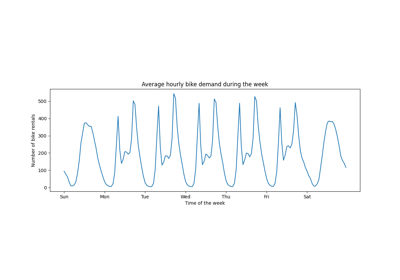neuraxle.steps.column_transformer¶
Module-level documentation for neuraxle.steps.column_transformer. Here is an inheritance diagram, including dependencies to other base modules of Neuraxle:
Neuraxle’s Column Transformer Steps¶
Pipeline steps to apply N-Dimensional column transformations to different columns.
Classes
|
A ColumnSelector2D selects column in a sequence. |
|
A ColumnChooser can apply custom transformations to different columns. |
|
ColumnSelectorND wraps a ColumnSelector2D by as many ForEach step as needed to select the last dimension. |
|
A numpy version of the |
Examples using neuraxle.steps.column_transformer.ColumnTransformer¶
-
class
neuraxle.steps.column_transformer.ColumnSelector2D(columns_selection: Union[int, Iterable[int], str, Iterable[str], slice])[source]¶ Bases:
neuraxle.base.BaseTransformerA ColumnSelector2D selects column in a sequence.
It can be used to select:
a single column,
a range of columns,
a slice of columns,
a list of columns.
The columns are expected to be integers. A special case is a string, which will be used as a pandas DataFrame column name.
-
__init__(columns_selection: Union[int, Iterable[int], str, Iterable[str], slice])[source]¶ Initialize self. See help(type(self)) for accurate signature.
-
transform(data_inputs)[source]¶ Transform given data inputs.
- Parameters
data_inputs – data inputs
- Returns
transformed data inputs
-
_abc_impl= <_abc_data object>¶
-
class
neuraxle.steps.column_transformer.NumpyColumnSelector2D(columns_selection: Union[int, Iterable[int], str, Iterable[str], slice])[source]¶ Bases:
neuraxle.base.BaseTransformerA numpy version of the
ColumnSelector2D.-
__init__(columns_selection: Union[int, Iterable[int], str, Iterable[str], slice])[source]¶ Initialize self. See help(type(self)) for accurate signature.
-
transform(data_inputs)[source]¶ Transform given data inputs.
- Parameters
data_inputs – data inputs
- Returns
transformed data inputs
-
_abc_impl= <_abc_data object>¶
-
-
class
neuraxle.steps.column_transformer.ColumnsSelectorND(columns_selection, n_dimension=2)[source]¶ Bases:
neuraxle.base.MetaStepColumnSelectorND wraps a ColumnSelector2D by as many ForEach step as needed to select the last dimension. n_dimension must therefore be greater or equal to 2.
-
__init__(columns_selection, n_dimension=2)[source]¶ Initialize self. See help(type(self)) for accurate signature.
-
_abc_impl= <_abc_data object>¶
-
-
class
neuraxle.steps.column_transformer.ColumnTransformer(column_chooser_steps_as_tuple: List[Tuple[Union[int, Iterable[int], str, Iterable[str], slice], neuraxle.base.BaseTransformer]], n_dimension: int = 3, n_jobs=None, joiner: neuraxle.base.BaseTransformer = None)[source]¶ Bases:
neuraxle.union.FeatureUnionA ColumnChooser can apply custom transformations to different columns. The ColumnChooser accepts a list of tuples for the transformations, and will name the steps accordingly (because of the TruncableSteps’ constructor) by converting each indexer object to a string. Indexer objects can be ranges, an int, or a list of ints. The input data can be N-dimensionnal (ND), in which case the axis must be specified. The columns data passed to the sub-steps will still be ND.
Usage example:
ColumnChooser([ (range(0, 2), CyclicTimes()), (3, CategoricalEnum(categories_count=5, starts_at_zero=True)), (4, CategoricalEnum(categories_count=5, starts_at_zero=True)), ([10, 13, 15], CategoricalEnum(categories_count=5, starts_at_zero=True)), ])
See also
-
__init__(column_chooser_steps_as_tuple: List[Tuple[Union[int, Iterable[int], str, Iterable[str], slice], neuraxle.base.BaseTransformer]], n_dimension: int = 3, n_jobs=None, joiner: neuraxle.base.BaseTransformer = None)[source]¶ Create a feature union. :type joiner:
BaseTransformer:type n_dimension:int:param steps_as_tuple: the NamedStepsList of steps to process in parallel and to join. :param joiner: What will be used to join the features.NumpyConcatenateInnerFeatures()is used by default. :param n_jobs: The number of jobs for the parallelizedjoblib.Parallelloop in fit and in transform. :param backend: The type of parallelization to do withjoblib.Parallel. Possible values: “loky”, “multiprocessing”, “threading”, “dask” if you use dask, and more.
-
_abc_impl= <_abc_data object>¶
-


